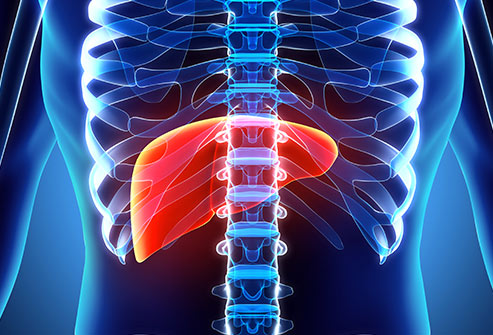Researchers Discover New Potential Drug To Prevent Liver Damage, Obesity And Glucose Intolerance
Source: Thailand Medical News Jan 22, 2020 5 years, 10 months, 3 weeks, 6 days, 10 hours, 23 minutes ago
A new study by researchers from Georgetown Lombardi Comprehensive Cancer Center show that animal models given a new drug targeting a key gene involved in lipid and glucose metabolism could tolerate a
high-fat diet regimen (composed of 60% fat from lard) without developing significant
liver damage, becoming
obese, or disrupting their body's
glucose balance.

Currently, the US CDC estimates that there are 4.5 million adults in the U.S. diagnosed with
liver disease every year while globally the figures are about 52 million people annually.
Nonalcoholic fatty liver disease, or
NAFLD, can evolve to a more serious condition known as inflammatory steatohepatitis, or
NASH, which can lead to chronic inflammation, scarring of the
liver, and cirrhosis and eventually to hepatocellular carcinoma. While
NAFLD can be reversed in the early stages with weight loss and dietetic adjustments, it becomes intractable in later stages.
To date, there is no standard therapy for
NASH, albeit many drugs are being evaluated in clinical trials. Because of the now epidemic state of the
liver disease, researchers at Georgetown developed a small molecule able to inhibit the activity of a key gene,
Slc25a1, that they hypothesized plays an important role in fatty
liver disease.
Dr Maria Laura Avantaggiati, MD, Associate Professor of Oncology at Georgetown Lombardi told
Thailand Medical News, "Our research takes on a definite urgency when you consider that about 25 percent of adults in the U.S. have
NAFLD. In addition, while
NAFLD can be reversed with dietetic adjustments, it is difficult for these individuals to undergo dramatic life-style changes, posing a challenge to halt
NAFLD evolution to NASH."
The researchers' key steps was to administer the
new drug,
CTPI-2, as a preventive treatment in mice fed the high-fat diet before
NASH developed, or as a reversion treatment in mice with significant
liver damage. This latter setting reflects what is seen people who seek medical advice when the disease is already present. The administration of
CTPI-2 was able to nearly completely prevent the evolution to
NASH and obesity in mice on the high-fat diet, compared to mice that did not receive the drug. At later stages of the disease,
CTPI-2 also reversed liver damage, induced weight loss and restored the glucose metabolic profile.
Dr Avantaggiati added, "The results were quite dramatic as the
livers of most of the mice that received
CTPI-2 nearly resembled the normal
livers of animals fed with a regular diet. In addition,
CTPI-2 normalized glucose metabolism, leading us to hypothesize that the d
rug could also have applications in the treatment of
diabetes, but this aspect will need further study."
In order to confirm their findings, the investigator developed a genetically modified mouse with
Slc25a1 inactivated in the
liver. Mice with the inactive
Slc25a1 gene were partially protected from
fatty liver disease as if they were treated with
CTPI-2, confirming the importance of this gene in liver damage induced by the
high-fat diet.
Dr Avantaggiati further added, "We have established that
CTPI-2 has anti-inflammatory activity and has anti-tumor activity towards several types of cancer. We now need to establish if
CTPI-2 can also halt the progression to hepatocellular carcinoma."
Reference : Mingjun Tan et al, Inhibition of the mitochondrial citrate carrier, Slc25a1, reverts steatosis, glucose intolerance, and inflammation in preclinical models of NAFLD/NASH, Cell Death & Differentiation (2020). DOI: 10.1038/s41418-020-0491-6
